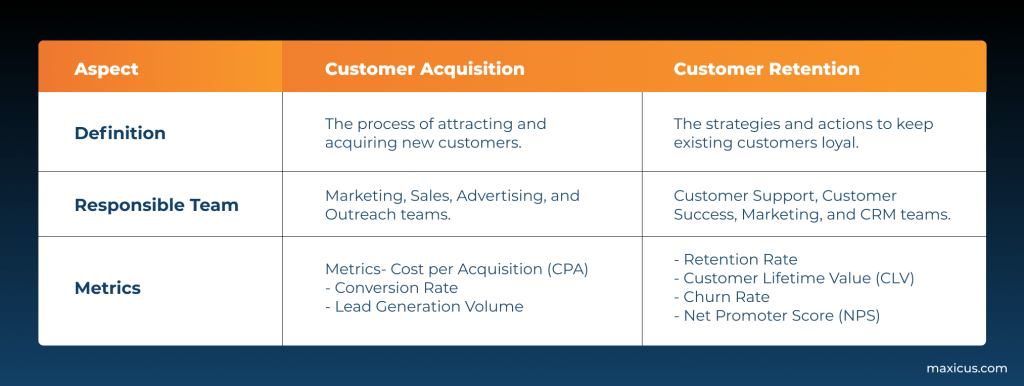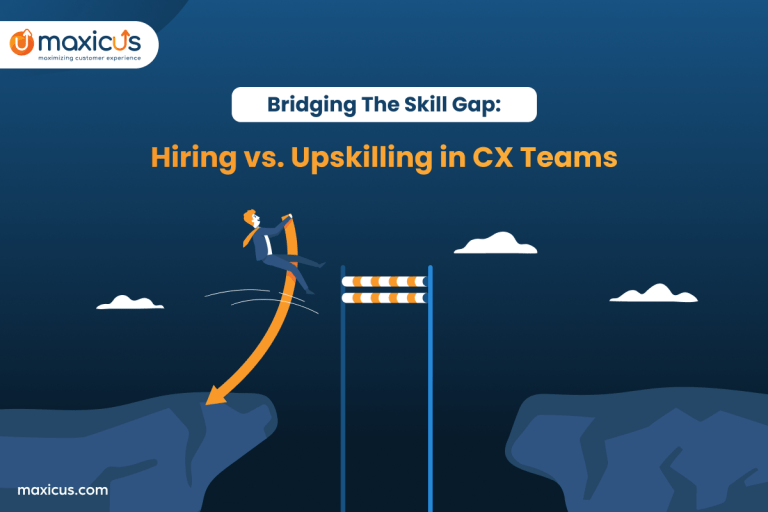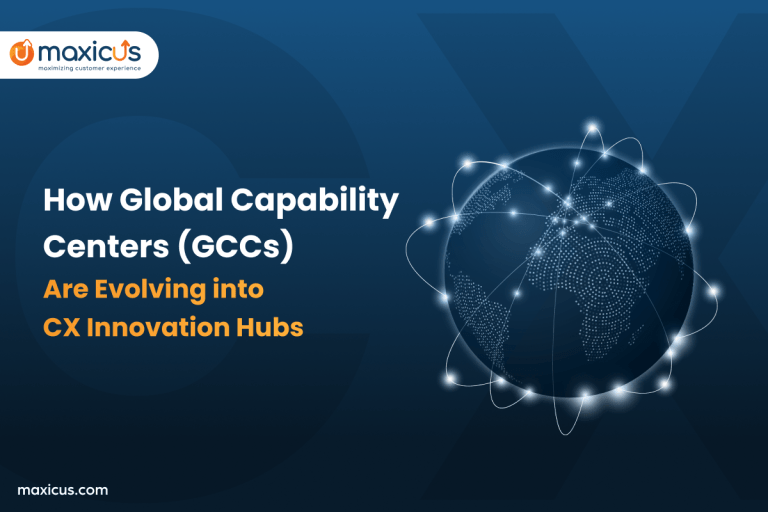Customer Acquisition vs. Customer Retention: Which Strategy Should You Focus On?
In the competitive world of customer experience (CX) solutions, businesses often face the decision of whether to focus on customer retention or customer acquisition. Both strategies are crucial for long-term success, yet they serve different purposes. At Maxicus, a leading CX solution provider, we understand that balancing these two strategies can significantly impact your business growth.
In this blog, we’ll explore the importance of both customer retention and customer acquisition, how they differ, and why an integrated approach could be the key to your business’s success.
What Is Customer Acquisition vs. Retention?

Customer Acquisition is the process of bringing new customers into your business. It relies on outreach from marketing and sales teams to identify prospects and convert them into paying customers. Tools like the QR Code Generator can enhance acquisition efforts by providing scannable codes for promotions, making it easier for potential customers to engage with your brand.
D2C Customer Acquisition plays a critical role in lowering Customer Acquisition Costs (CAC). By converting visitors to your brand’s own website into paying customers, you can reduce CAC, creating more cost-effective growth.
Customer Retention is everything you do to keep existing customers coming back. Customer success and support teams play a significant role in customer retention by continually nurturing relationships and ensuring the customer’s ongoing success with your brand. Learn more about selecting the right outsourcing partner for customer support and retention.
Importance of Customer Acquisition and Retention
Importance of Customer Acquisition:
- Expands market reach
- Maintains a steady flow of revenue and supports revenue growth
- Introduces your brand to a wider audience
- Taps into new industries
- Addresses new use cases and solves new challenges
Importance of Customer Retention:
- Increases Customer Lifetime Value (CLTV)
- Builds brand loyalty and advocacy
- Reduces marketing spend
How to Calculate Customer Retention Costs
Customer retention costs refer to the investments made to keep existing customers engaged and returning. While there’s no universal formula, you can calculate retention costs by dividing total retention expenses by the number of active customers during a specific period.
Customer Retention Cost = Total Costs of Retention Programs / Active Customers during the Period
High retention costs can decrease margins and profits, as each additional purchase becomes less valuable over time.
How to Calculate Customer Acquisition Costs
Customer acquisition costs refer to the total expenses required to convert a lead into a paying customer. This includes marketing, advertising, labor, and promotions targeted at new customers. To calculate acquisition costs, divide the total acquisition expenses by the number of new customers gained in the same period.
Customer Acquisition Cost = Total Acquisition Expenses / New Customers Acquired
Rising customer acquisition costs are a concern, especially as digital marketing platforms introduce privacy measures that make it harder to collect data.
Why Do Marketers Prefer Retention Over Acquisition?
Data shows that retaining existing customers is equally, if not more, important than acquiring new customers. The cost of acquiring new customers is five times higher than the cost of retaining existing ones. While acquisition allows you to increase the number of customers you have, customer retention enables you to maximize the value of customers you’ve already captured.
Which Should My Business Focus On?
I wish there were a one-size-fits-all answer to the customer acquisition vs. retention debate, but unfortunately, there isn’t. Like most things in life, it’s nuanced. The decision to focus on retention over acquisition (or vice versa) depends highly on your unique business situation.
There will be times when you need to focus on gaining new customers, and other times when keeping those customers around should be your main priority. It’s all part of the journey. That being said, I believe customer retention is exceptional because, when you get that right, it also drives customer acquisition. Here are my thoughts on when to focus on customer acquisition vs. retention.
Contact Maxicus today to optimize your customer strategies for long-term success!
Conclusion
Ultimately, both customer acquisition and customer retention are crucial for the development and success of a business. Customer retention contributes to a company’s sustainability by encouraging loyalty and generating a steady stream of income, while customer acquisition aids in the growth and expansion of a business.
As a CX solution provider, Maxicus understands that both customer acquisition and customer retention are essential for business growth, but they require different strategies and approaches. Acquisition focuses on attracting new customers through targeted marketing and promotions, while retention is about keeping existing customers loyal with excellent service and personalized experiences.
Maxicus helps businesses balance both by using data-driven tools for targeted acquisition and offering seamless CX solutions for effective retention. Our services ensure that new customers are engaged from the start, and existing customers stay loyal, driving sustainable growth. By integrating both strategies, Maxicus helps businesses thrive in today’s competitive market.
FAQ
Is customer engagement more important than customer acquisition?
Yes, customer engagement is often more important than customer acquisition in the long term. While acquiring new customers is essential for growth, engagement helps build loyalty, increase retention, and drive higher lifetime value, making it more cost-effective and sustainable.
How can I improve customer engagement?
You can improve customer engagement by offering personalized experiences, maintaining regular communication, providing excellent customer service, and creating loyalty programs.
How can businesses reduce Customer Acquisition Costs (CAC)?
To reduce CAC, businesses can focus on improving conversion rates by turning website visitors into customers, optimizing their marketing strategies, using referral programs, and leveraging data-driven insights to target high-potential customers more effectively.
How can I create a retention-focused strategy for my business?
A retention-focused strategy includes delivering excellent customer service, providing personalized experiences, implementing loyalty programs, regularly engaging with customers through various communication channels, and continuously gathering feedback to improve products or services.










